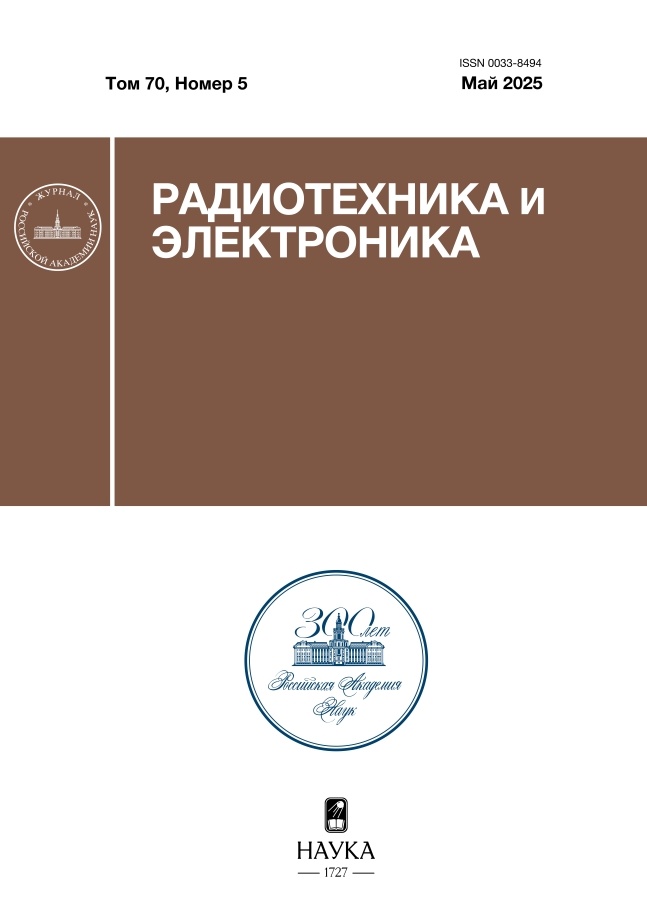Formation of non-transmittance bands in thin-film looping YIG microwave channel
- Autores: Zyuzin V.A.1, Ognev A.V.2, Sadovnikov A.V.1
-
Afiliações:
- Saratov National Research State University named after N.G. Chernyshevsky
- Sakhalin State University
- Edição: Volume 70, Nº 5 (2025)
- Páginas: 456-463
- Seção: ON THE 70th ANNIVERSARY OF S.A. NIKITOV
- URL: https://rjeid.com/0033-8494/article/view/691160
- DOI: https://doi.org/10.31857/S0033849425050042
- EDN: https://elibrary.ru/qjvkxr
- ID: 691160
Citar
Texto integral
Resumo
The present study is dedicated to the examination of the effects that occur in the propagation of spin waves (SW) in a thin film looping microwave formed from yttrium iron garnet (YIG). Utilizing the numerical solution of the Landau-Lifshitz-Gilbert (LLG) equation of magnetization motion, the spectra of SWs excited and propagating along a waveguide structure formed by periodically recurrent articulations of sections of the YIG microwave at different angles are investigated. It is demonstrated that the «zigzag» structure has the capacity to form zones of non-transmittance in the spectrum. Conclusions are drawn from the analysis of amplitude-frequency characteristics, which indicate the potential for controlling the number and depth of opacity zones by varying the number and angles of inclination of the waveguide sections. The findings of this study contribute to the advancement of knowledge in the domain of physical effects associated with opacity band formation in irregular magnetic structures, paving the way for the development of microwave signal filters that are controlled by magnetic fields.
Palavras-chave
Sobre autores
V. Zyuzin
Saratov National Research State University named after N.G. Chernyshevsky
Email: Zyuzinva@bk.ru
Astrakhanskaya Str., 83, Saratov, 410012
A. Ognev
Sakhalin State University
Email: Zyuzinva@bk.ru
Lenina Str., 290, Yuzhno-Sakhalinsk, 693000
A. Sadovnikov
Saratov National Research State University named after N.G. Chernyshevsky
Autor responsável pela correspondência
Email: Zyuzinva@bk.ru
Astrakhanskaya Str., 83, Saratov, 410012
Bibliografia
- Gubbiotti G., Barman A., Ladak S. et al. // J. Phys.: Cond. Matt. 2024. V. 37. № 14. Article No. 143502.
- Vedmedenko E.Y., Kawakami R.K., Sheka D.D. et al. // J Phys. D: Appl. Phys. 2020. V. 53. № 45. ArticleNo. 453001.
- Sander D., Valenzuel S.O., Makarov D. et al. // J Phys. D: Appl. Phys. 2017. V. 50. № 36. Article No. 363001.
- Kruglyak V.V., Demokritov S.O., Grundler D. // J Phys. D: Appl. Phys.2010. V. 43. № 26. Article No. 264001.
- Sadovnikov A.V., Grachev A.A., Sheshukova S.E. et al. // Phys. Rev. Lett. 2018. V. 120. № 25. P. 257203.
- Vansteenkiste A., Van de Wiele B. // J. Magn. and Magn. Mater. 2011. V. 323. № 21. P. 2585.
- Vansteenkiste A., LeliaertJ., Dvornik M. et al. // AIP Advances. 2014. V. 4. № 10. P. 107133.
- Hикитов С.А., Калябин Д.В., Лисенков И.В. и др. // Успехи физ. наук. 2015. Т. 185. № 10. С. 1099.
- Serga A.A., Chumak A.V., Hillebrands B. // J. Phys.: Appl. Phys. 2010. V. 43. № 26. P. 264002.
- Ustinov A.B., Lähderanta E., InoueM., Kalinikos B.A. // IEEE Magnetics Lett. 2019. V. 10. Article No. 5508204.
- Hикитов С.А., Сафин А.Р., Калябин Д.В. и др. // Успехи физ. наук. 2020. Т. 190. № 10. С. 1009.
- Sadovnikov A.V., Grachev A.A., Sheshukova S.E. et al. // Phys. Rev. Lett. 2018. V. 120. № 25. P. 257203.
- O’Keeffe T.W., Patterson R.W. // J. Appl. Phys. 1978. V. 49. № 9. P. 4886.
- Stancil D.D., Prabhakar A. Spin Waves. Theory and Applications. Berlin: Springer, 2009.
- Damon R.W., Eshbach J.R. // J. Phys. Chem. Solids. 1961. V. 19. № 3–4. P. 308.
Arquivos suplementares










